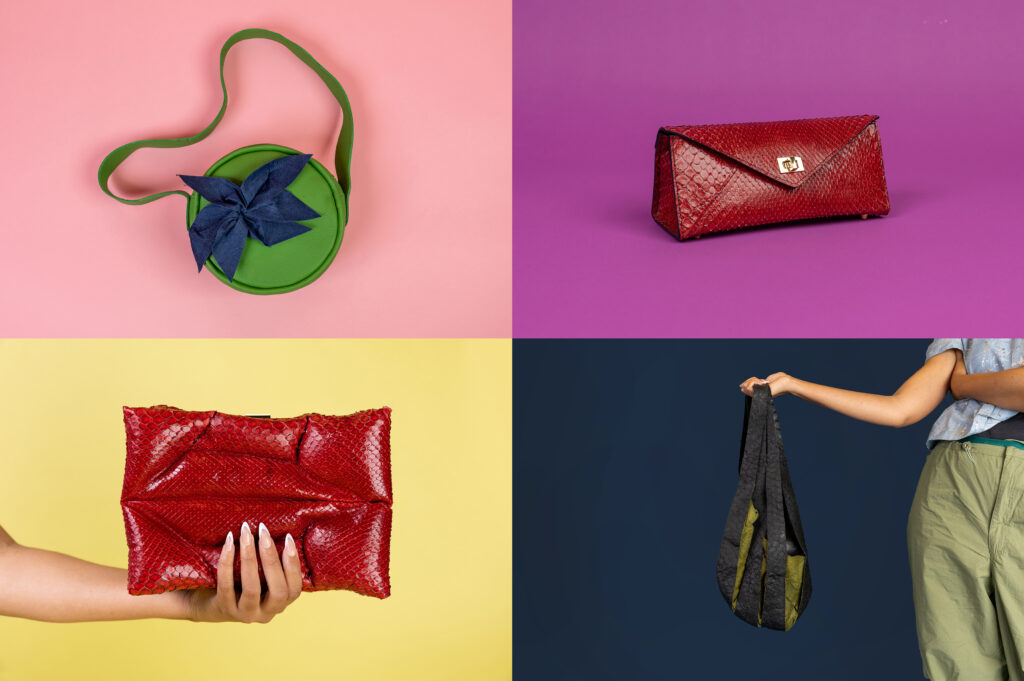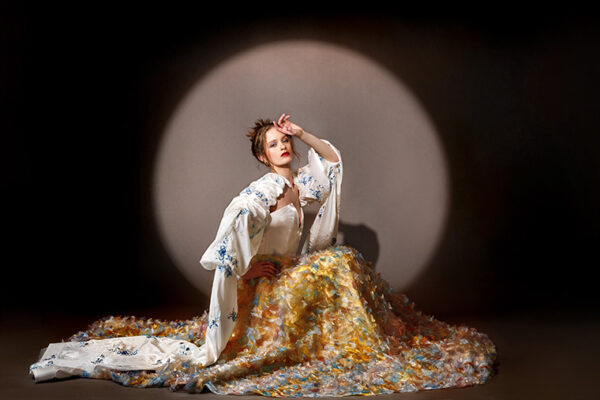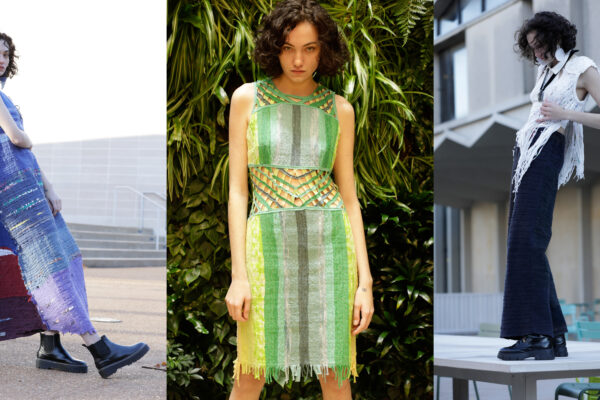There are many paths to a career in fashion. Kahan Chavda, BSBME ’16, began his scuba diving off the Florida Keys.
“‘What are those fish?’ They’re beautiful,” Chavda recalls asking the divemaster. The response was swift and vehement. “He ranted for 10 minutes!”
The fish, it turned out, were lionfish, a striking but invasive species native to the Indo-Pacific. In the 1970s, a few dozen lionfish made their way into the Caribbean Sea. Lionfish are now wreaking environmental havoc across the Atlantic basin. In some areas, their population densities have grown to more than 1,000 fish per acre.
“Lionfish will eat anything that moves. It’s a tale of ecological and economic destruction.”
Alumnus Kahan Chavda
“Lionfish will eat anything that moves,” Chavda says. “They can strip the life off a coral reef system in weeks. They eat the juvenile grouper and snapper that Caribbean fishermen rely on. It’s a tale of ecological and economic destruction.”
Today, Chavda is a co-founder and the chief commercial officer of Inversa, a Florida-based company that is pioneering the field of ethically harvested leathers. Launched in 2020, Inversa made its Paris Fashion Week debut last September in collaboration with acclaimed Uruguayan designer Gabriela Hearst.
Though surprised and disillusioned, Chavda also was intrigued. As a biomedical engineering major in WashU’s McKelvey School of Engineering, he’d been trained to break down big, complex problems into component parts. “What can be done? How do we cut through ambiguities? How do we add some structure?”
All python pieces in Hearst’s spring/summer 2025 collection, “Summoning the Goddesses,” were developed using Inversa’s line of invasive Burmese python leather. Since being introduced to the Everglades via the exotic pet trade, this deadly constrictor has decimated native mammal populations, including foxes, racoons, opossums, and cottontail and marsh rabbits.
“Sustainability in fashion is a huge problem,” says Mary Ruppert-Stroescu, associate professor and head of fashion design in the Sam Fox School of Design & Visual Arts. “Loss of biodiversity is a huge problem. Destruction of natural habitats is a huge problem. Yet somehow, Kahan and Inversa are harnessing the power and creativity of fashion to restore and protect endangered species and ecosystems.
“What could be better than that?”
Returning to campus
Ruppert-Stroescu is an authority on sustainable textiles. She holds a patent for RECLEM, a process for textile upcycling and sustainable garment design. She is sympathetic to innovations like “vegan leather,” which aim to avoid the harms of industrial-scale leather production.
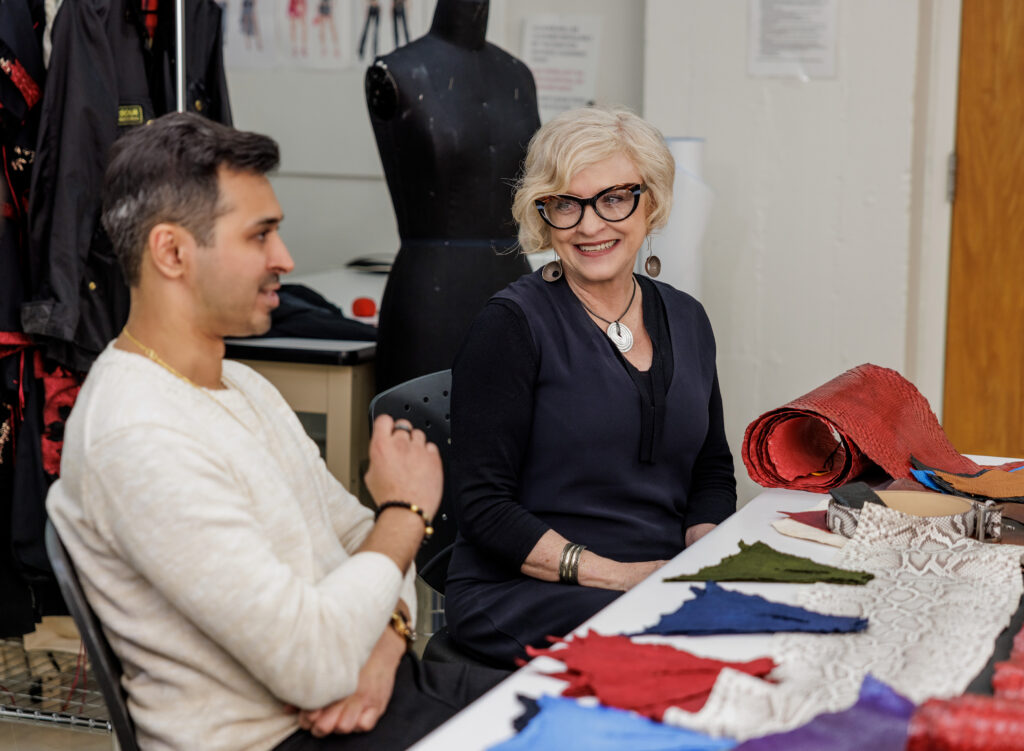
“Vegan leather seems to be a good solution,” she explained in a recent talk for TEDxStLouisWomen. “It protects animals, right? But most vegan leather is plastic-based. Like other plastics, it will sit in landfills for hundreds of years before biodegrading. And it can’t compare to the comfort factors of tanned natural hide.”
Last spring, Ruppert-Stroescu invited Chavda back to campus for a workshop with six senior fashion designers. Speaking to the group, he chronicled Inversa’s origins, ambitions and launch. He described early iterations of the business, including ventures into food supply and jewelry, which helped shape the company’s ultimate direction. He discussed sourcing logistics, humane and regulatory standards, and the biochemistry of fish and reptile skin. He explained how keeping an ecosystem free of invasive species helps to restore native flora and fauna.
And speaking just miles from the Mississippi River, he described how silverfin, also known as invasive river carp, is disrupting the world’s fourth-largest watershed.
“In some places, carp have replaced 95% of the [native] biomass,” Chavda says. “That means that there are areas of the river that have almost no native life. There’s no native vegetation. There’s no native fish. It’s created an existential threat throughout the Mississippi.”
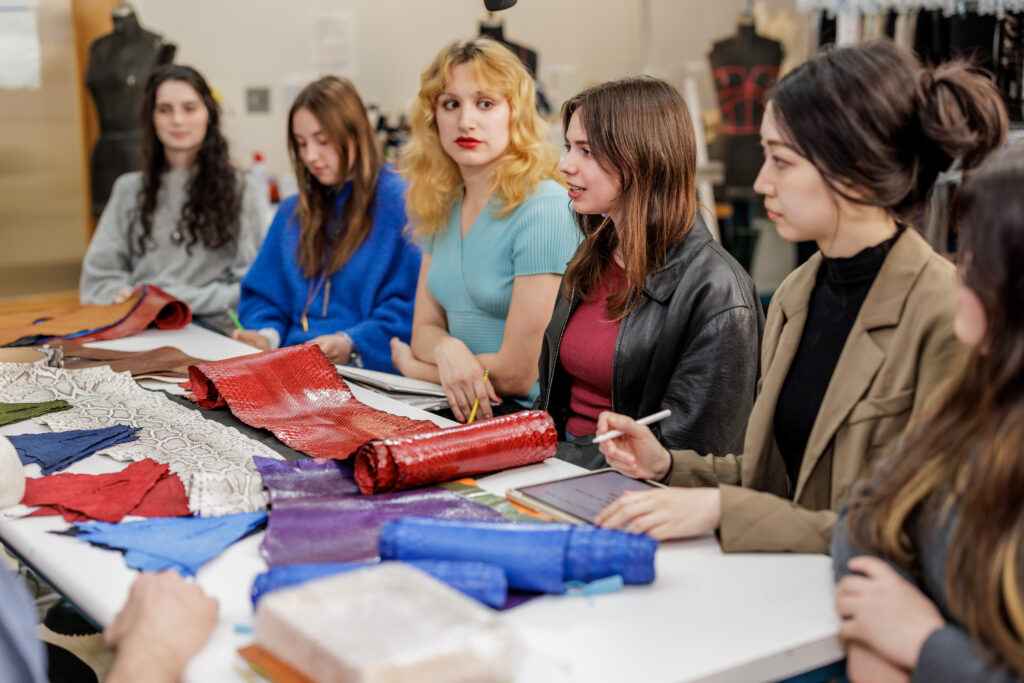
Start imagining
But Chavda didn’t only bring stories. He brought samples.
Inversa currently restores three ecosystems — the Caribbean reefs, the Greater Everglades and the Mississippi River Basin — through three leather, lionfish, python and silverfin, all offered in a variety of colors and finishes. The seniors, meanwhile, brought detailed drawings. The goal for the day? Match the right materials to the right accessories.

“As a fashion designer, when you touch a material, you can really start imagining what you’ll do with it,” Indigo Amunategui says. “You get the feel for how it would fit on a body. That opened a world of possibilities.”
Joining the group was Gabe Batson, co-founder of local luxury goods manufacturer Tufts & Batson, who offered feedback and technical advice. Each designer then chose one drawing, specified one or more Inversa leathers, and integrated their selections into a final tech pack.
In fashion industry jargon, “a tech pack is a compilation of design specs, measurements and details,” explains Brooke Cowan. “Written down and compiled into a document, it can be passed off to whoever is manufacturing or producing the product.
“Leather has a very structural appeal,” adds Cowan, who designed a slim-profiled handbag in burgundy and camel silverfin. “There are a lot of things you can play with in terms of shape and structure. Getting to work with these interesting leathers really inspired me.”
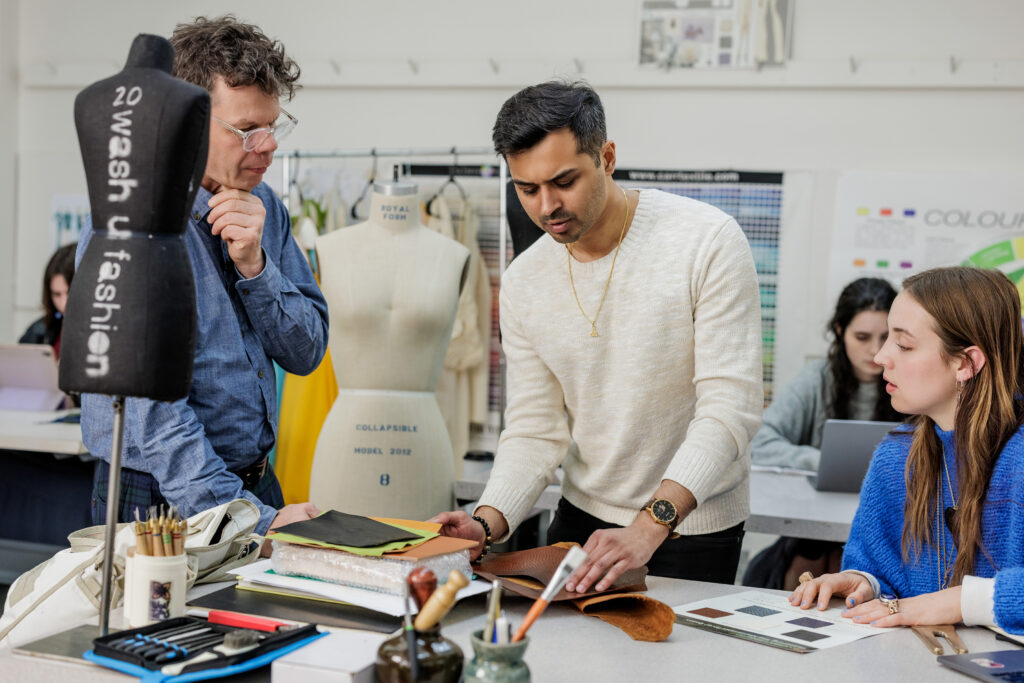
On the runway
Over the next several weeks, Tufts & Batson fabricated prototypes. On April 26, those pieces made their runway debut before an audience of hundreds, as part of “Voilà,” the Sam Fox School’s 96th annual Fashion Design Show.
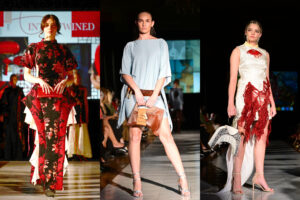
Vivian Nguyen designed a small clutch in red Inversa python. The piece complements her capstone collection, “Intertwined,” which is based on the Red String of Fate, an East Asian folk belief symbolizing the power of relationships.
“I drew inspiration from my Vietnamese heritage,” Nguyen says. “I thought of the red envelopes that my parents would give me and my family during Lunar New Year.”
Emily Carlin chose sapphire lionfish to accentuate the warm hues of her “Reverie” collection. Maggie Maichel designed a large carryall from alternating strips of green lionfish and black silverfin. Julia Yuan combined white silverfin and natural python for a boldly textured geometric purse built on circles and arcs.
Amunategui, whose retro-tinged “Venus in Chrome” collection examines beauty standards through the lens of industrial design, created a minaudiere (a type of evening bag) in quilted red Inversa python. But making that selection wasn’t easy.
“I found myself drawn to every material we were presented,” Amunategui says. “It’s amazing how something so negative can be transformed into something so beautiful.”
